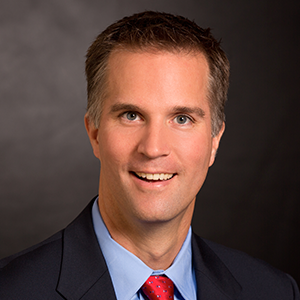Q: Patrick, Webroot just expanded its partnership with Palo Alto Networks which, I'm told, will enable the company to deliver smarter security with your BrightCloud Threat Intelligence. How does this deal specifically benefit Palo Alto Networks – and, of course, its clients?
Patrick Kennedy: Webroot provides Collective Threat Intelligence to deliver the most up-to-date enterprise-class protection for endpoints, firewalls, and SIEMs. Webroot has attained partner certification with Palo Alto Networks, and is helping their customers to reduce the number of malicious IPs infiltrating their network infrastructure and creating incidents for their info security teams to respond to. To accomplish this, they are augmenting their existing Palo Alto Networks next-generation firewall (NGFW) devices with an additional layer of protection against malicious IPs via Webroot's BrightCloud IP Reputation Service for Palo Alto Networks.
Webroot's BrightCloud IP Reputation for Palo Alto Networks enables enterprises to enhance the effectiveness of their Palo Alto Networks NGFW by integrating highly accurate IP reputation data into their Palo Alto Networks firewall to block malicious incoming IPs. This solution analyzes inbound IP addresses from each Palo Alto Networks NGFW appliance in the customer environment and customizes the threat intelligence for each NGFW device to include malicious IPs that have attacked that device in the past and other malicious IPs that are likely to attack in the future.
Q: Similarly, Allied Bank has also partnered with Webroot. What does that partnership mean for Allied Bank and its customers?
Kennedy: Ally Bank is offering their customers, who are active online banking users, the opportunity to download a complimentary copy of Webroot SecureAnywhere to protect their online transactions, financial information and assets, and identity. The Webroot software has dramatically reduced Ally Bank's rate of fraud and contributed to being awarded "top five most secure online banking" status, according to financial analysts Javelin Group.
Webroot SecureAnywhere AntiVirus for Financial Institutions provides Ally Bank's customers real-time detection and remediation for PCs and Macs against today's advanced threats. With 99.7% efficacy against even brand-new, zero-day attacks, Webroot blocks financially targeted malware, viruses, Trojans, backdoors, spyware, worms, and rootkits, among others. The cloud-based solution of Webroot secures customers' online identity and financial information without the need to download signature updates.
Webroot protects Ally Bank's interests and reduces instances of online fraud by working silently in the background to protect usernames, account numbers, security codes, and other personal information from theft -- even if malicious applications are present on a user's device.
Q: In your report on mobile banking apps, your Mobile Threat Research Team revealed that they found that only 45% of the apps were "truly trustworthy or benign." Fill me in on what problems they discovered, and what do you recommend to banks and their clients to avoid hacker attacks?
Kennedy: According to BI Intelligence, as of August of 2014, over one quarter of all Internet traffic is mobile. The average user has over 100 apps on their device, and users in the U.S. have indicated that if a mobile wallet were available, they would trust their current bank by an almost 2-to-1 margin over anyone else as the wallet to use. However, mobile threats are growing fast with over 27% of apps either malicious or unwanted as of August 2014. Mobile threats include scams, phishing, spam, and malicious apps themselves.
Part of the issue is customer mobile usage patterns -- mobile device usage behaviors heighten security issues. For example, users download apps from third parties, connect to insecure public Wi-Fi, lose their mobile devices, root and jail break their own devices, and disable their device security. This leaves users vulnerable to spyware, Trojans, PUAs, system monitors, adware, worms, and rootkits which conspire to steal user information.
Overall, the number of malicious apps have increased over 6,200% from just 203 in 2011 to 1.3M in 2014, and the main threat vectors for mobile devices are rooted or jail-broken devices, malicious or suspicious apps on the device, and malware on the device.
Q: As the amount of data at risk expands, many organizations are increasing their consumption of intelligence data. In your report on enterprise security, why do respondents believe threat intelligence is essential for a well-rounded cybersecurity defense and how is it effective in stopping cyber threats?
Kennedy: We see organizations increasing their consumption of threat intelligence for two primary reasons: first, they are continuing to experience breaches with their current technology and are looking to integrate threat intelligence into their security environment to reduce the volume of security incidents; second, integrating threat intelligence can help then to automate certain security operations and remediation activities, such as updating firewall blocks lists and prioritizing alerts.
Q: What will your focus be at Black Hat USA 2015? If you'll be giving a talk, what will the takeaways be?
Kennedy: At Black Hat, we want attendees to see that smarter companies are using collective threat intelligence to combat today's threats -- and that you can apply that same real-time threat analysis to endpoints in order to provide a level of protection and response not possible with traditional endpoint solutions.
Timur Kovalev, our senior director of client technology and threat intelligence, will be speaking about mobile application security and, specifically, which Android applications are easy to disassemble/reverse engineer, and code hardening solutions. He'll include demonstrations on how to re-package apps with malicious code, how hackers are accessing server-side endpoints today, and how vulnerabilities expose intellectual property. He'll also show the security methods that combat these modern threats.










